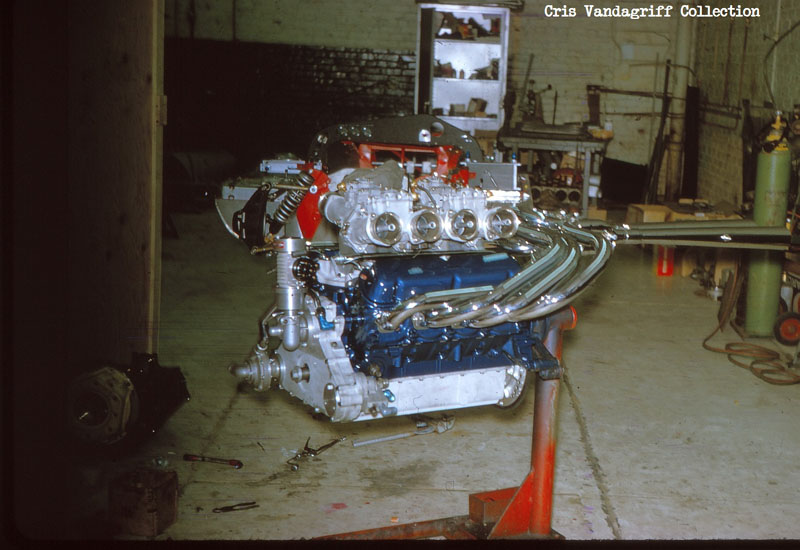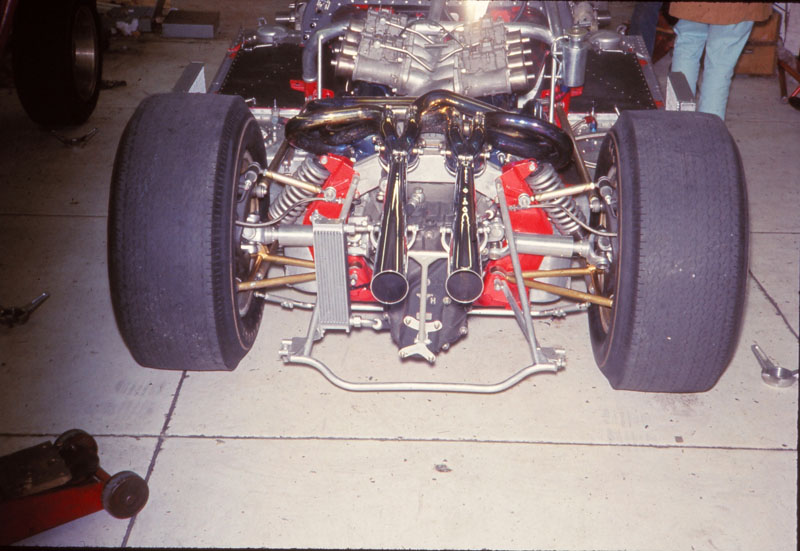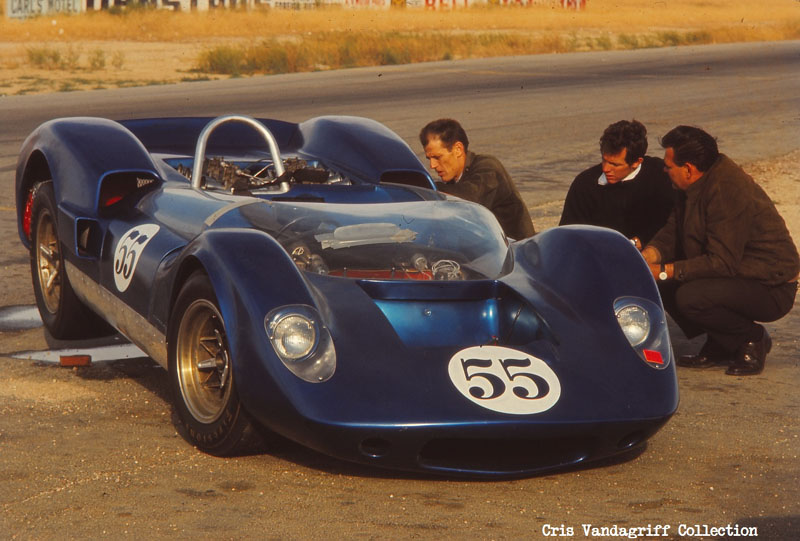-
Administrator

I’ve long been fascinated by Doane Spencer, and his approach to building race cars. He had an uncanny knack (and the HSC Tiger was a good example of this), for somehow always improving the aesthetics of a car while also trying to improve its performance. But I don’t know if this was a conscious thing, that came from his early hot rodding days, or if it was just a natural side-effect of his drive improve on the standard fare. But somehow, in his efforts to make a car perform better, he also made it more pleasing to the eye.

This was in evidence once again when the next vehicle arrived at Hollywood Sport Cars for Spencer to work his magic on. Vandagriff had just purchased a new McLaren-Elva MkI (chassis 20/09) from Carl Haas, with which to contest the United States Road Racing Championship, the newly announced Canadian-American Challenge Cup, and various other events in which Group 7 sports cars were invited. Immediately, Spencer set about making improvements to the McLaren, remodelling the front bodywork, the roll hoop, adding scoops to the rear bodywork to aid oil cooling, fitting Schroeder rack and pinion steering, pin-drive knock-off magnesium wheels (initially intricate ‘Star Of David’ wheels, followed by more traditional Halibrands), and his own cross-ram Webered 289ci Ford motor.

Underneath, he skinned the entire belly and lower sills/rockers/fuel cells in aluminium sheet, to help add strength and rigidity to the McLaren tube-chassis. Typically, Spencer’s modifications much improved the aesthetics of the McLaren, and his hot rodding roots were in evidence with beautifully finished paint work, over which fine pin-striping would later be added, plus chroming of the suspension. With the swoopy body removed, his attention to detail was unveiled for all to enjoy.

Frustratingly, however, just two months after HSC had taken stock of their MkI model, and following Spencer’s substantial efforts to improve on the basic McLaren offering, the new McLaren-Elva MkII (or M1B) was released. Much more than a simple model number designation to further boost sales, the MkII featured significant changes and upgrades over the MkI, including heavy revisions to the front bodywork. And so, once again, Spencer set to work, making further changes to the car, including the fitment of MkII bodywork. Work on the car continued right up to the very first event of the new Can-Am series, at St. Jovite, in Canada, on September 11, 1966. Indeed, completion of the car was running so late, it still didn’t have its race numbers applied when it arrived at St. Jovite. Electrical tape was used to make temporary numbers so the car could practice, before the permanent numbers were applied for the race. With Jim Adams at the wheel, the HSC McLaren qualified 12th from a field of 34 cars, and finished 16th in the race.
The team missed Rounds 2 and 3 at Bridgehampton and Mosport, but returned for Round 4 at Laguna Seca, where Adams qualified 13th, and finished 11th and 9th respectively in the two heats. That was the last Can-Am race the HSC McLaren contested in 1966. The car was obviously fast, but the little 289 Ford motor was running out of puff against the big block Chevy units used by Chaparral, and even the small block Chevys employed by many other teams, including the McLaren and Lola factory outfits, which were stroked out to 364ci. Even Dan Gurney, with Ford support, was running a Gurney-Weslake fettled motor, which at 305ci, was still considered small in the Can-Am in 1966. Gurney scored Ford its only Can-Am victory, when he was first across the stripe at Bridgehampton that first season.
 Posting Permissions
Posting Permissions
- You may not post new threads
- You may not post replies
- You may not post attachments
- You may not edit your posts
-
Forum Rules






 Reply With Quote
Reply With Quote